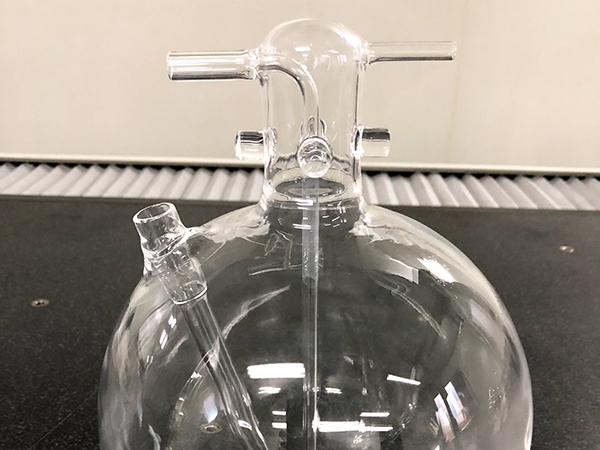NEWS DETAIL

Quartz bottles are essential tools in laboratories and industrial processes where high-temperature resistance and chemical stability are crucial. With years of experience working with industrial-grade quartz, I’ve seen how choosing the right quartz bottle can make operations safer, more efficient, and more reliable.
This guide walks you through what quartz bottles are, their key properties, available types and sizes, advantages, and tips for safe handling.
Introduction: What is a Quartz Bottle?

A quartz bottle is a container made from high-purity fused silica, designed to withstand extreme temperatures and corrosive chemicals. Unlike ordinary glass bottles, quartz bottles maintain their shape and integrity even under thermal shock or intense chemical reactions.
For beginners, it helps to think of a quartz bottle as a durable laboratory workhorse. It is widely used in chemical synthesis, semiconductor processing, and optical experiments where precision and reliability matter most. Its transparency and chemical inertness make it an indispensable component in any high-performance laboratory or industrial setting.
Key Properties of Quartz Bottles
Quartz bottles offer several properties that set them apart from conventional glass or plastic containers:
High Temperature Resistance: Can handle temperatures exceeding 1000°C without deforming or cracking.
Chemical Stability: Resistant to most acids, bases, and solvents, ensuring safe storage and reaction conditions.
Thermal Shock Resistance: Can tolerate rapid temperature changes, making them ideal for heating and cooling cycles.
Transparency: Allows easy observation of reactions and contents without opening the bottle.
Durability: Less prone to scratching or clouding compared to ordinary glass, extending service life.
These characteristics make quartz bottles particularly valuable in applications that require precision, safety, and reliability. From my experience, understanding these properties before purchase can save both time and costs in lab operations.
Types and Sizes of Quartz Bottles
Quartz bottles come in a variety of types and sizes to accommodate different needs:
Round-Bottom Quartz Bottles: Ideal for heating or reactions requiring even heat distribution.
Flat-Bottom Quartz Bottles: Suitable for storage or applications where stability is important.
Graduated Quartz Bottles: Include measurement markings for easy monitoring of liquid volumes.
Specialized Quartz Bottles: Designed for optical or semiconductor applications requiring precise specifications.
In terms of size, quartz bottles can range from small 10 mL laboratory bottles to large industrial vessels capable of holding several liters. Selecting the right type and size depends on your specific application, whether it’s chemical reactions, sample storage, or high-temperature industrial processes.
Advantages of Quartz Bottles Over Other Materials
Quartz bottles outperform glass, plastic, and even some ceramics in several ways:
Superior Heat Resistance: Unlike glass, quartz can withstand extremely high temperatures without softening or deforming.
Enhanced Chemical Resistance: It resists corrosive chemicals that might degrade glass or plastic over time.
Long-Term Durability: Less prone to scratching, clouding, or warping, which extends their lifespan.
Precision and Clarity: Transparency ensures accurate observation during experiments or reactions.
Safety in Industrial Applications: Reduced risk of sudden breakage under thermal stress.
These advantages make quartz bottles the preferred choice for applications where reliability and performance cannot be compromised.
Safe Handling and Storage Tips
Proper handling and storage are crucial to maintain the integrity of quartz bottles:
Avoid Mechanical Shock: Although durable, quartz bottles can break if dropped or struck. Handle with care.
Temperature Precautions: Gradually heat or cool the bottle to prevent thermal stress. Avoid direct flame contact unless specified for high-temperature use.
Storage Conditions: Keep bottles in a clean, dry environment away from heavy equipment that might cause accidental damage.
Cleaning: Use mild detergents and soft brushes; avoid abrasive materials that could scratch the surface.
Chemical Safety: Always follow safety protocols for the chemicals stored or processed inside the quartz bottle.
Following these practices ensures longevity and safe use, especially in demanding laboratory or industrial environments.





